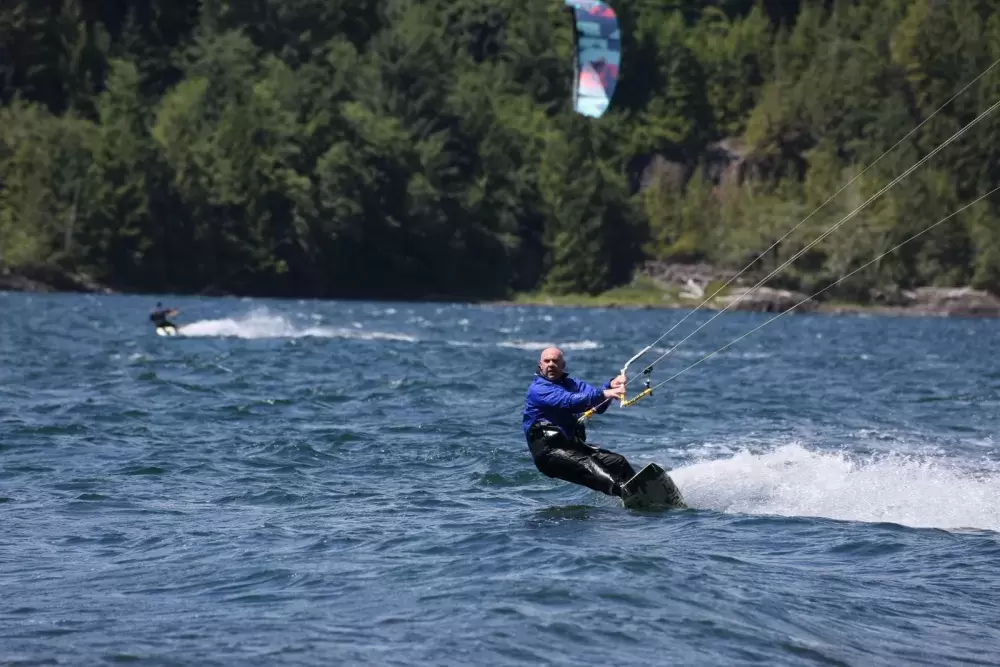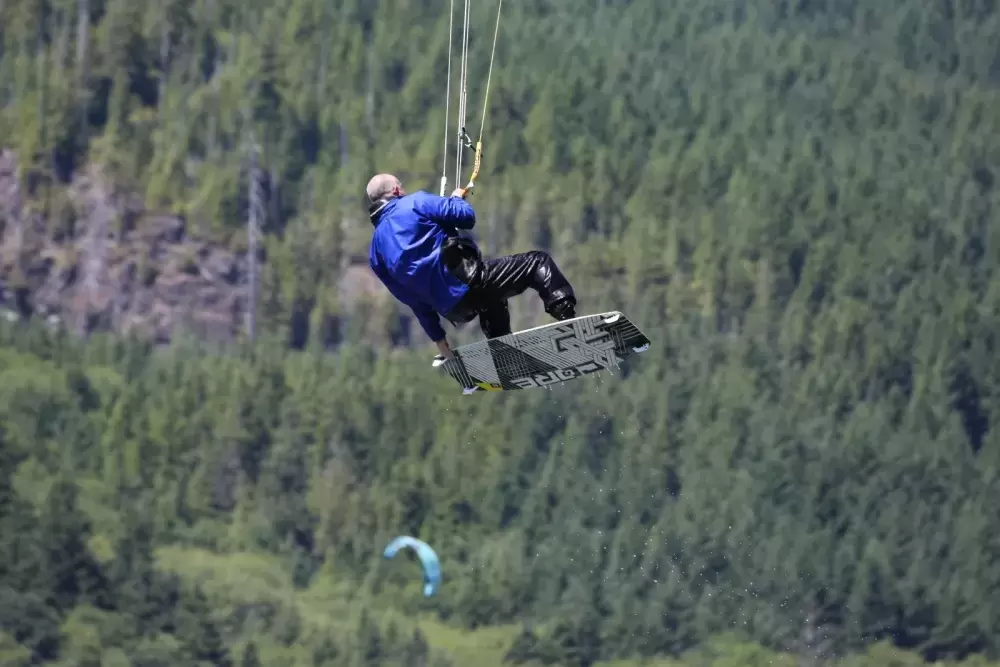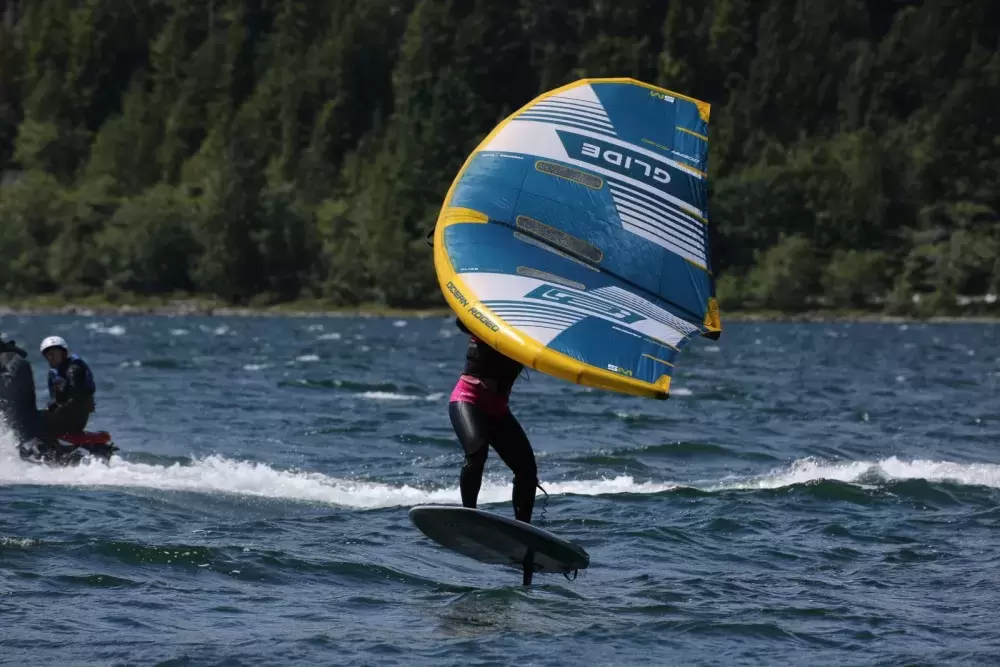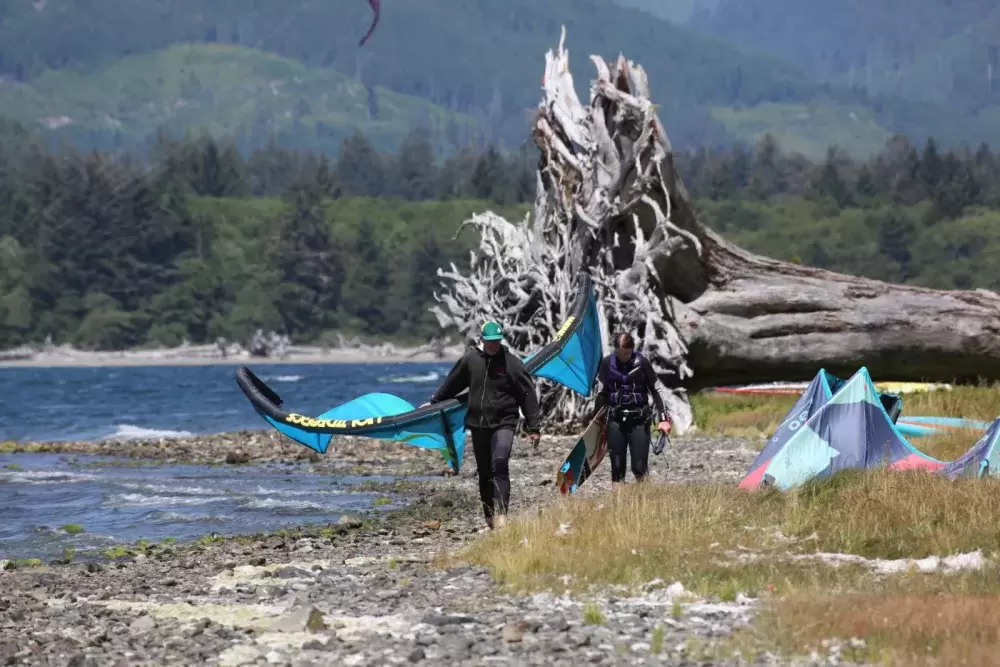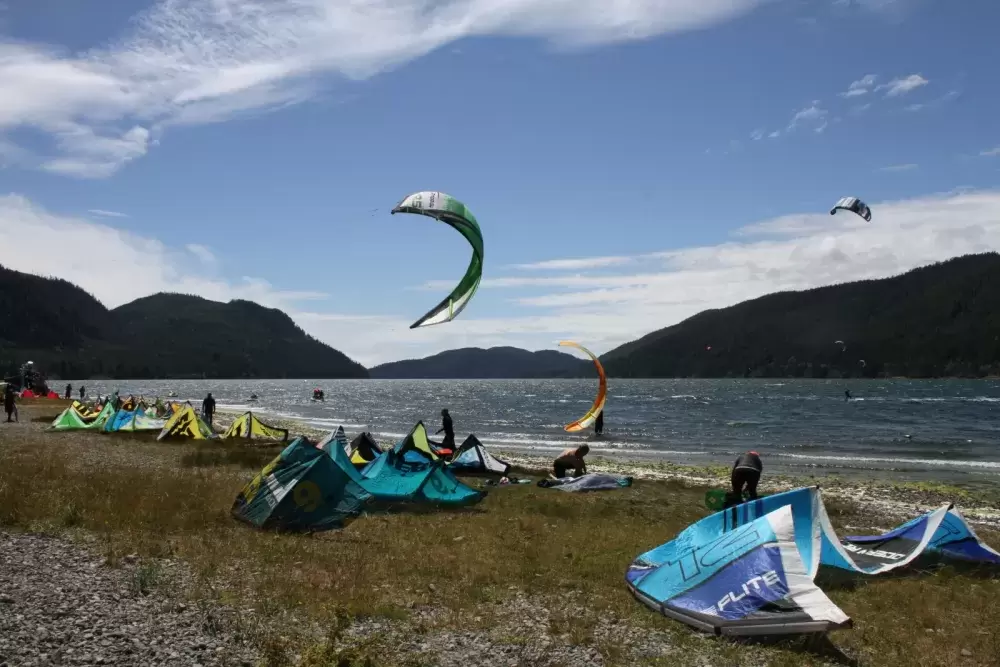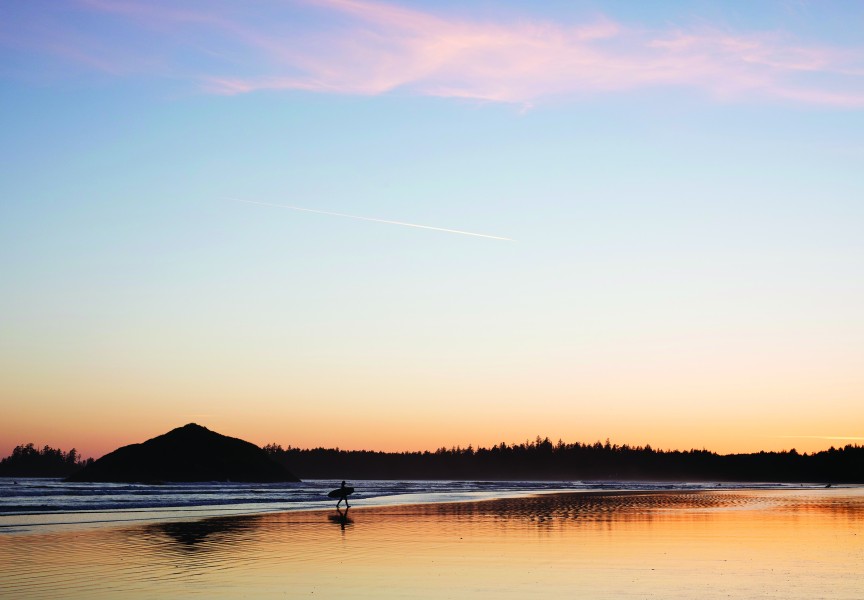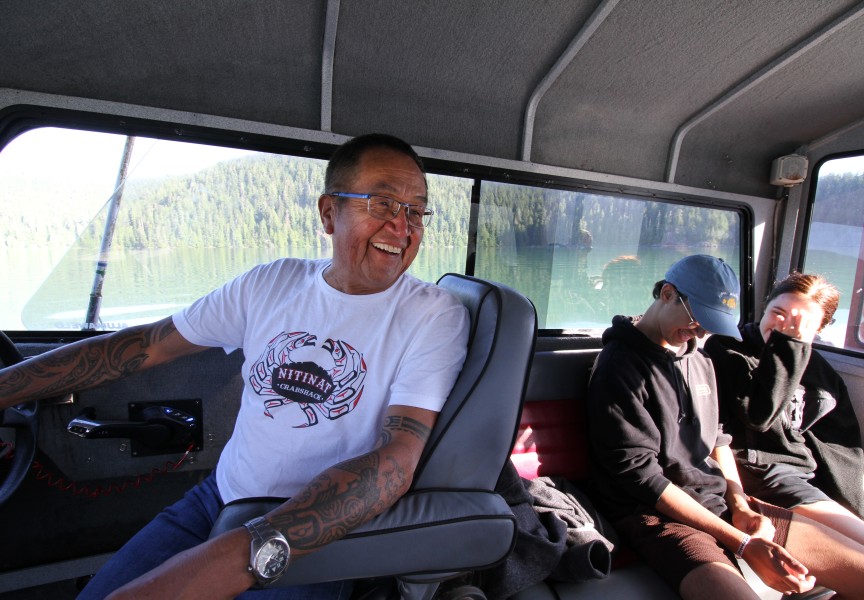Tourism at Nitinaht Lake is doing well this season with little to no disruptions caused by the Highway 4 road closure.
Nitinaht Lake is on the traditional territories of the Ditidaht First Nation and is about 60-kilometres southwest of the town of Lake Cowichan.
Bryan Cofsky, executive director of the Ditidaht Development Corporation, said so far this season the Nitinaht Windsurf Park and Caycuse campgrounds, which are the main source of tourism in the region, are “doing well.”
“Kiteboarders are still the majority of our clientele, although with the expanded area and new sites we are attracting more families who are not windsurfers or kiteboarders,” Cofsky said. “We are building six retreat cabins in the woods on the existing Ditidaht Private Lands. It has been a successful Job Creation/WorkBC and training project for local members.”
Cofsky said the new cabins should be complete by this September and are funded by the BC government’s Community Economic Recovery Infrastructure Program (CERIP) and Job Creation Partnerships (JCP).
Highway 4 was shut down between Koen Road and Cathedral Grove from June 6 – 24th due to the Cameron Bluffs wildfire. A detour route was put in place during the highway shutdown that took drivers on a gravel road from Port Alberni to Lake Cowichan.
Cofsky said the highway closure did not affect tourism in the area and in fact increased traffic because the road goes through Nitinaht.
Nitinaht is also the third entry point for hikers accessing the West Coast Trail. Cofsky said numbers for people accessing the trail through Nitinaht were down slightly this May and June from last year, but he’s noticing July has been getting busier.
Another development at Nitinaht Lake is the construction of a new dock.
“The new dock is presently being installed and will replace the existing one,” Cofsky said. “The usage does not change as it has been used predominantly for member vessels, DFN commercial fishing boats and the West Coast Trail water taxi.”

